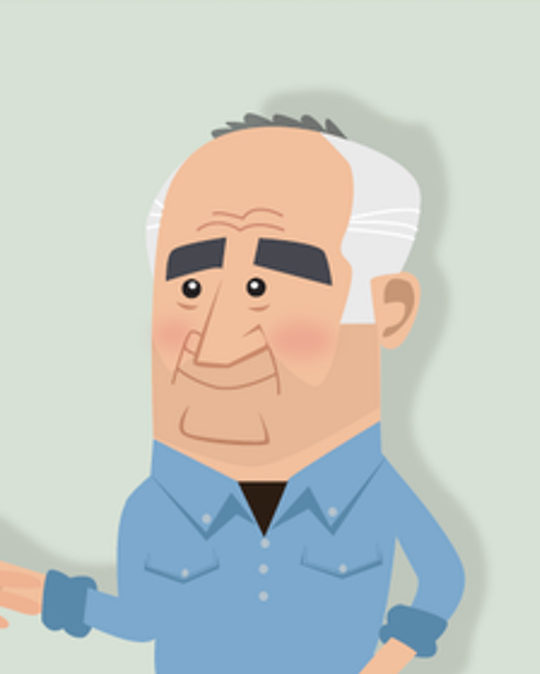
Russell

Russell struggles with the demands of working on his North Queensland farm because of chronic back pain. By the end of each day, his back is painful. His GP has worked with him, trying physiotherapy, chiropractic treatment, weight loss and reviewing his work practices without success. The GP refers Russell for an MRI scan. Russell returns for review and his GP recommends that he sees Dr Scott-Young. Russell is given a specialist referral.
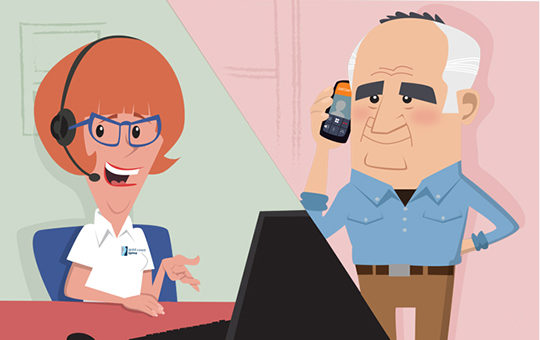
Russell speaks with one of our Patient Coordinators who says she will send him some forms to complete about himself and his condition. Russell is to send in the forms along with any previous radiology reports.
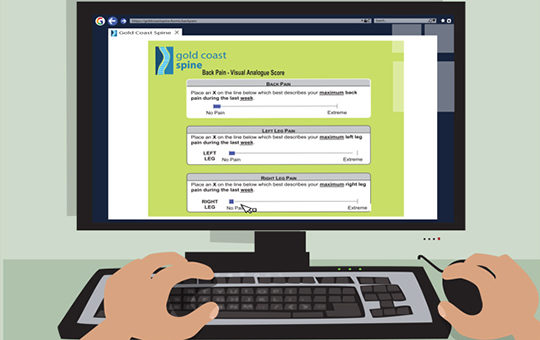
Russell emails his completed forms to Gold Coast Spine, along with his scanned radiology reports and specialist referral. Gold Coast Spine’s nurse calls Russell to conduct a Nurse Health Check, taking a detailed history relevant to his spine health.
Dr Scott-Young reviews Russell’s information and is able to view the MRI scan online. Dr Scott-Young refers Russell for an EOS scan. Our Patient Coordinator books Russell’s appointment and Russell books the EOS to be performed the day before.

The day before his appointment, Russell and his wife fly to the Gold Coast.
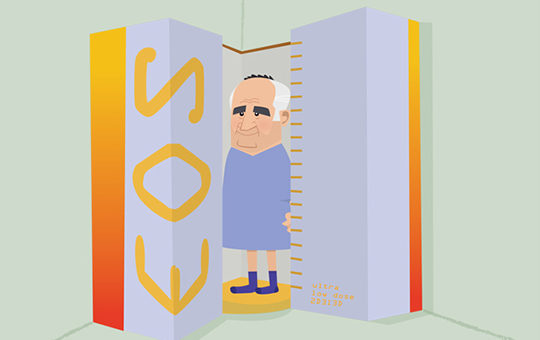
Russell has the EOS scan performed.

On the day of his appointment with Dr Scott-Young, the nurse checks in again with Russell, taking his measurements and updating any information since the Nurse Health Check.
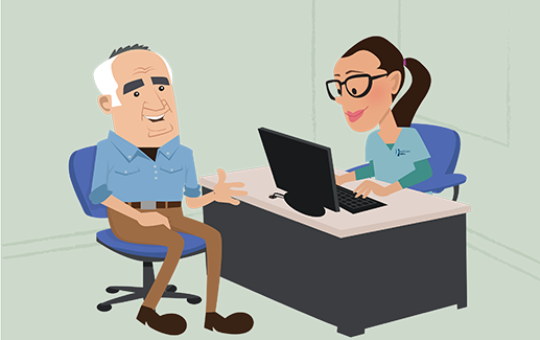
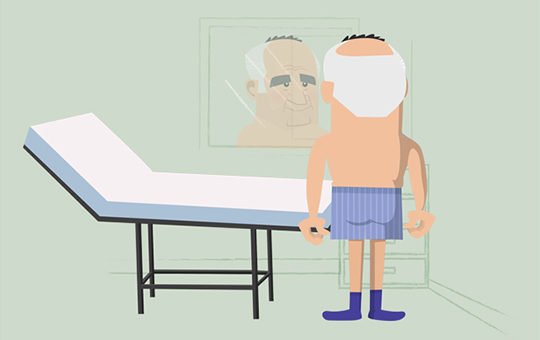
Russell then attends his first appointment with Dr Scott-Young. Dr Scott-Young listens to the history of his condition, examines Russell and reviews his radiology. Dr Scott-Young discusses his views about Russell’s symptoms. He says that it sounds like the pain is coming from Russell’s discs between his vertebrae. He explains that the discs are the shock absorbers in the spine and that they wear out with age and can become painful. The pain can be worse when sitting for long periods or doing repeated bending and lifting tasks.
The surgeon says that he is confident one source of the pain is a degenerative disc at L4-5 but that L5-S1 might also be contributing to his symptoms. He advises that he needs to confirm the diagnosis by referring Russell for a lumbar discogram.
Russell’s surgeon advises him that he would like him to be assessed by Physio Next Door before he returns home. They can assist him with some exercises that will help him manage his symptoms. Russell is given a referral to Physio Next Door.
A detailed letter goes to Russell’s GP about the consultation. Each time Dr Scott-Young reviews Russell, he updates his GP in writing.

Russell attends an appointment at Physio Next Door. He is assessed and provided with some exercises he can do at home.
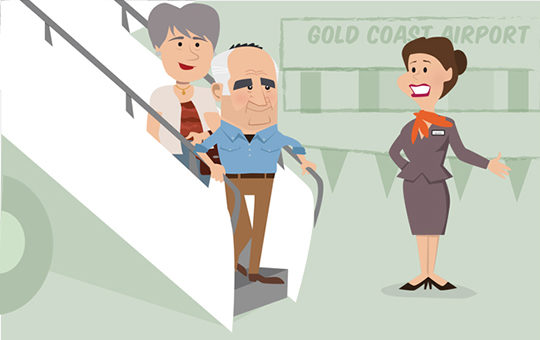
Russell and his wife return to the Gold Coast several weeks later to have the discogram performed and attend a follow up appointment with Dr Scott-Young.
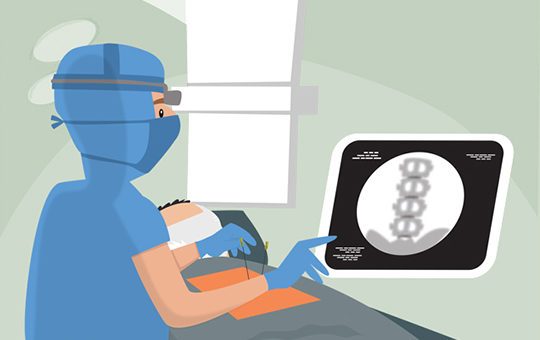
Before attending his appointment at Gold Coast Spine, Russell has his discogram done on Friday. He arranges to stay on the Gold Coast until his appointment with his surgeon the following Tuesday. His surgeon wants Russell to monitor (over a few days) whether he experienced his usual symptoms following the discogram.
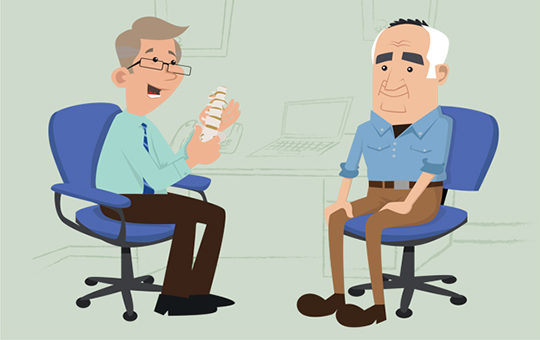
Russell has his follow up appointment with Dr Scott-Young to discuss the results of the discogram. Russell tells his surgeon that, when both spinal levels were tested, his symptoms came back as bad as they had ever been. He also reported the symptoms settled down again with medication over the next few days.
Dr Scott-Young explains this was a positive result. Based on his history, the examination and the tests performed, Dr Scott-Young’s view was that both the L4-5 and L5-S1 discs are contributing to Russell’s symptoms.
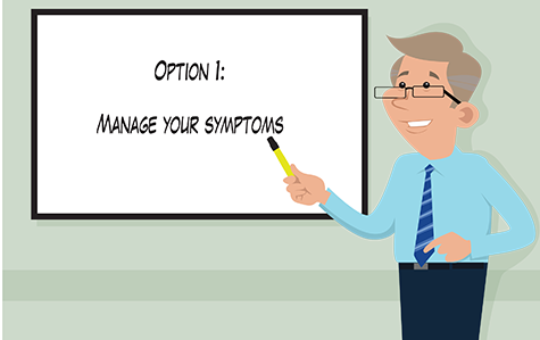
Dr Scott-Young discusses treatment options with Russell, including continuing to manage his symptoms with simple measures without the need for surgery. He explains that Russell could avoid the tasks that aggravate his symptoms and manage exacerbations of his symptoms with measures such as heat/ice, gentle exercise and simple analgesics.
Russell says he has accessed several health professionals in his local area and had tried physiotherapy, some chiropractic work, and keeps active on the farm. He avoids taking pain medication, as he needs to operate heavy equipment. Russell explains that he has to be able to rely on his back as, when he is laid up, it’s hard to get help for the farm.

Dr Scott-Young advises he believes the best surgical option for Russell would be an L4-5, L5-S1 anterior lumbar interbody fusion (ALIF) and discusses what the surgery would involve. Russell confirms that he would like to have the surgery as he wants to go back to work on his farm as soon as possible. Dr Scott-Young asks him to go home and have a think about his options. In the meantime, he will arrange for a Surgical Estimate to be sent to Russell. At the end of the appointment, Russell is given an information pack about the surgery.
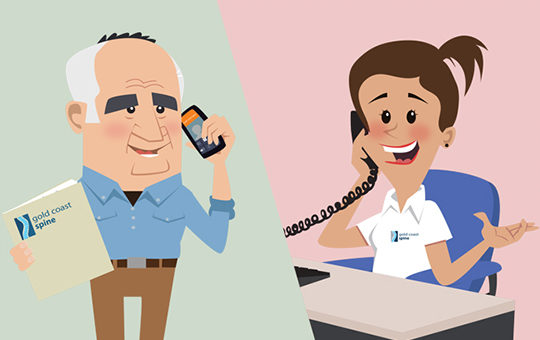
Russell returns to North Queensland and reads through his Gold Coast Spine information pack. He also receives a Surgical Estimate from Gold Coast Spine, outlining the costs associated with the surgery.
Russell later calls our Surgical Coordinator to advise he is ready to proceed. The Surgical Coordinator organises a consent appointment, pre-operative appointment and surgery date for Russell. Russell is advised that he is required to stay on the Gold Coast for at least 2 weeks after he is discharged from hospital.

Russell and his wife organise flexible flights to the Gold Coast and book the accommodation they need for the stay on the Gold Coast.
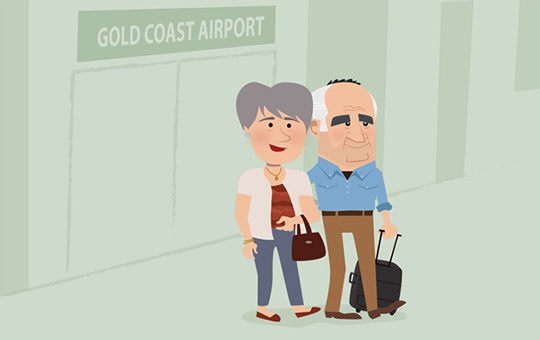
Three weeks later, Russell and his wife are back on the Gold Coast for his surgery.
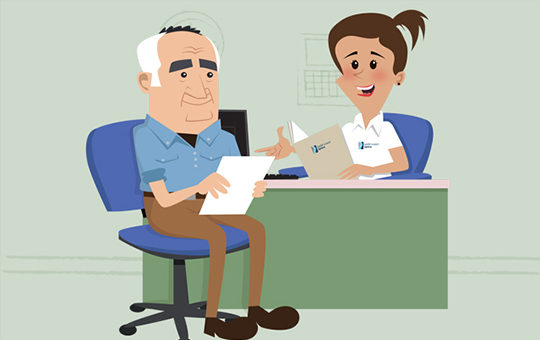
Russell attends a consent appointment with Dr Scott-Young. He brings a list of questions he has about the surgery and returning to work on his farm. Dr Scott-Young answers his questions and completes a detailed consent process and form with Russell.
Russell is then assisted by our Surgical Coordinators to complete the required paperwork and finalise the arrangements for his admission to hospital.
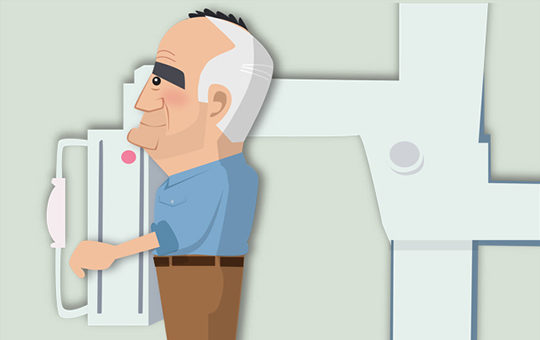
Russell attends the hospital’s pre-admission clinic and has some blood tests and other tests performed. The nurse at the clinic answers his questions about what to expect during his hospital stay. Russell also had a pre-operative chest x-ray done.
Next, Russell attends a pre-admission appointment with Physio Next Door. They will be looking after him in hospital and during his post-operative rehabilitation.
Prior to surgery, Russell clears his bowels with a bowel prep solution.
On the morning of his surgery, Russell is admitted for his surgery.
Dr Scott-Young performs the L4-5 L5-S1 ALIF procedure with his surgical team.
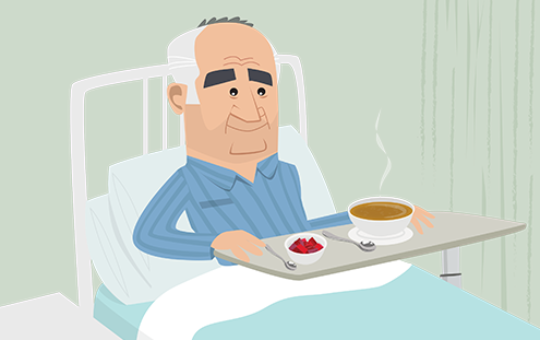
At the start if his recovery from surgery, Russell is on a diet consisting of clear liquids, such as broths and soups.
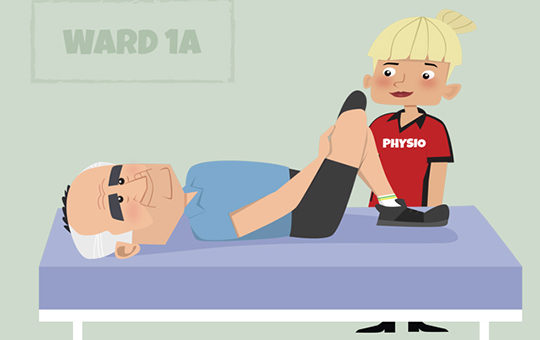
Russell recovers on the ward and begins his post-operative exercises under the care of Physio Next Door.

After 5 days in hospital, Russell is discharged and joins his wife at a local hotel. He has an appointment with Physio Next Door in a couple days and his first post-operative appointment with his surgeon is in 14 days’ time.

Two days later, Russell begins to feel unwell. His wife notices he has a fever and his surgical wound appears red and feels hot.
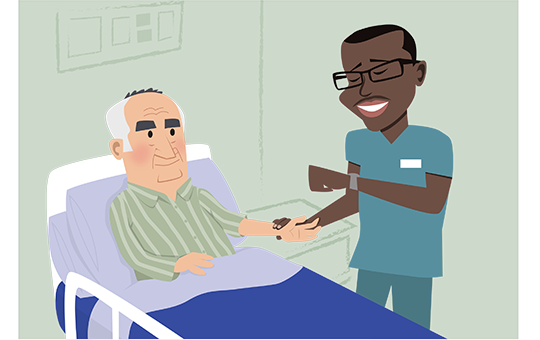
Russell calls the nurse at Gold Coast Spine and he is reviewed by Dr Scott-Young at Gold Coast Spine. The surgeon is concerned that Russell may have a wound infection and he readmits Russell to hospital for investigation and treatment.
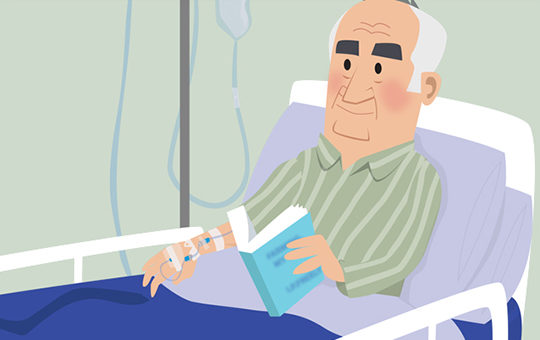
Blood tests confirm an infection and Russell is given intravenous antibiotics. Later Russell is taken back to theatre by Dr Scott-Young to washout the infected wound. Five days later, Russell is discharged and is given a prescription for oral antibiotics.
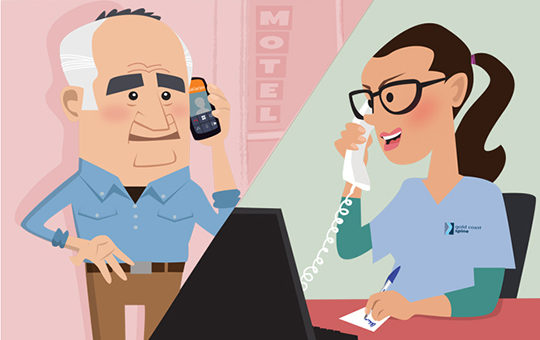
After being discharged from hospital, Gold Coast Spine’s nurse calls Russell at his motel to check how he is going and to organise an appointment with Dr Scott-Young before he returns home.
Russell and his wife extend their stay at the Gold Coast hotel and rearrange their flights home. Russell continues his post-operative rehabilitation at Physio Next Door.
Russell also attends Gold Coast Spine to have his dressings inspected and changed by our nurse. At his appointment with his surgeon, Russell gets the all clear to return home.

After getting the all clear, Russell and his wife fly back to North Queensland. Dr Scott-Young reminded him to use common sense, good food and exercise when he gets home. Russell is given the all clear to return to driving. Russell is told to get in touch with our nurse should he have any concerns about his wound.
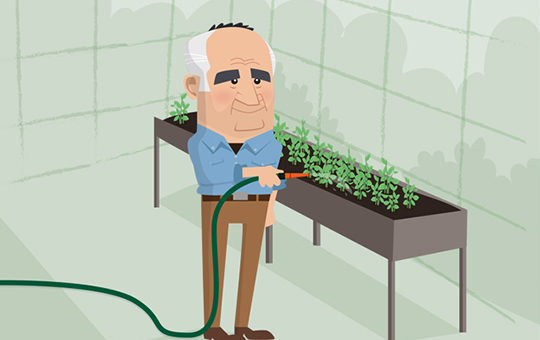
A week after returning home, Russell begins light work around the farm but he still requires a farm hand for the heavy work.
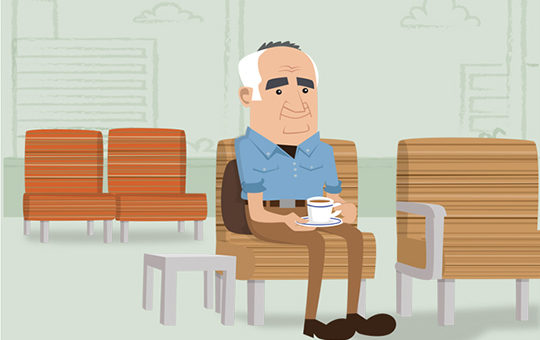
Russell has another appointment with Dr Scott-Young three months after his surgery. Russell has some radiology done before the appointment. He is keen to get back to his usual work on his farm and he discusses this with Dr Scott-Young.
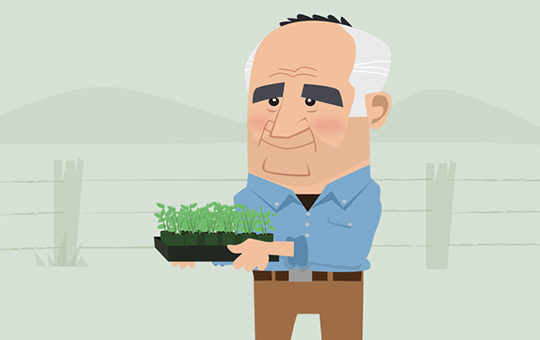
After his appointment, Russell progresses to heavier duties around his farm. Russell’s GP organises some blood tests to make sure there is no more infection.

Six months post-operatively, Russell returns to the Gold Coast for another appointment with Dr Scott-Young. He has some radiology done before attending his appointment. Russell reports that he is experiencing little or no back pain, even when he does his farm work. Dr Scott-Young is pleased with the result and also tells Russell that the most recent blood tests show no sign of a continuing infection. His scans show well placed implants and a solid fusion. Russell is cleared to return to full duties.
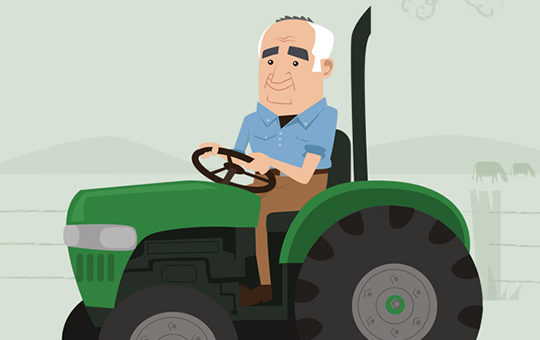
Russell is back to all his usual work on the farm.

Russell is followed up by Gold Coast Spine one year after his surgery. Russell is asked to complete some questionnaires about the result of his surgery.